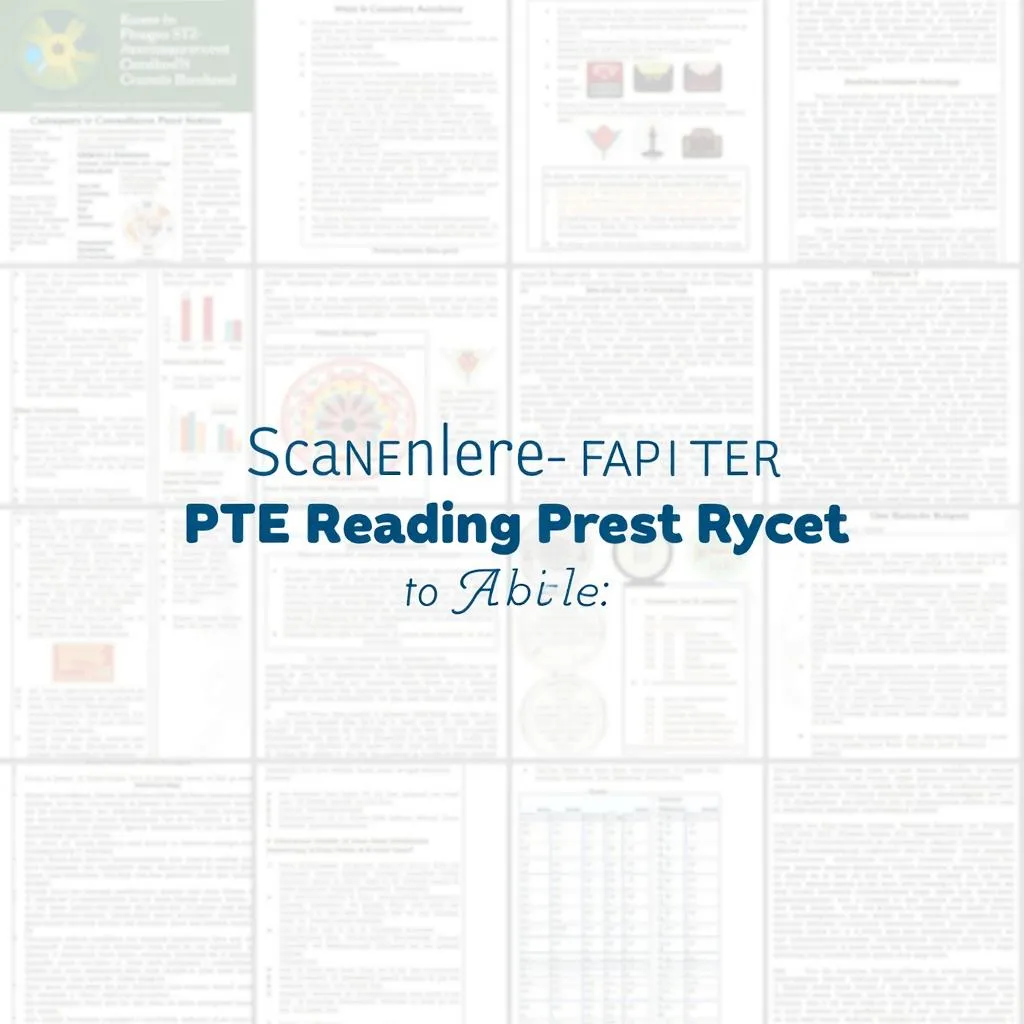Scanning is a crucial skill for success in the PTE Reading module. This technique allows you to quickly locate specific information within a text, saving valuable time during the exam. In this comprehensive guide, we’ll explore effective strategies to practice and improve your scanning abilities for the PTE Reading section.
Understanding Scanning in PTE Reading
Scanning is the process of rapidly moving your eyes over a text to find particular pieces of information. Unlike reading for comprehension, scanning focuses on locating key details without necessarily understanding the entire passage.
Why Scanning Matters in PTE
In the PTE Reading module, scanning is essential for several question types:
- Multiple choice, single answer
- Multiple choice, multiple answers
- Re-order paragraphs
- Fill in the blanks
- Reading & writing: Fill in the blanks
Mastering this skill can significantly boost your performance and time management in the exam.
Key Techniques for Effective Scanning
- Identify your purpose
- Use your peripheral vision
- Look for keywords and phrases
- Utilize text structure and formatting
- Practice with a timer
Let’s delve into each of these techniques in detail.
1. Identify Your Purpose
Before you start scanning, clearly understand what information you’re looking for. This might be:
- Specific dates or numbers
- Names of people or places
- Key terms related to the question
Having a clear purpose will help you filter out irrelevant information and focus on what matters.
2. Use Your Peripheral Vision
Train your eyes to take in more information at once by utilizing your peripheral vision. This technique allows you to process text more quickly without fixating on every single word.
 Scanning technique using peripheral vision
Scanning technique using peripheral vision
3. Look for Keywords and Phrases
Identify and focus on keywords or phrases that are likely to lead you to the information you need. These might include:
- Question-specific terms
- Synonyms or related words
- Topic sentences at the beginning of paragraphs
Dr. Emily Chen, a renowned PTE expert, advises: “When scanning, train your brain to pick up on key terms quickly. It’s like your eyes are playing a game of ‘spot the difference’ with the text.”
4. Utilize Text Structure and Formatting
Pay attention to the structure and formatting of the text to guide your scanning:
- Headings and subheadings
- Bold or italicized text
- Bullet points or numbered lists
- First and last sentences of paragraphs
These elements often contain important information or indicate where key details can be found.
5. Practice with a Timer
Improve your scanning speed by practicing with timed exercises. Start with longer time limits and gradually reduce them as you improve. This will help you develop the quick-thinking skills needed for the PTE exam.
Pro Tip: Set specific goals for your timed practice sessions, such as finding three key pieces of information within 30 seconds.
Effective Scanning Practice Strategies
To hone your scanning skills for the PTE Reading module, try these practice strategies:
- Use real PTE practice materials
- Create your own scanning exercises
- Practice with varied text types
- Incorporate speed reading techniques
- Engage in regular timed drills
1. Use Real PTE Practice Materials
Utilize official PTE practice tests and sample questions to familiarize yourself with the exam format and question types. This will help you apply scanning techniques in a realistic exam context.
2. Create Your Own Scanning Exercises
Develop custom scanning exercises using newspapers, magazines, or online articles:
- Highlight specific information in a text
- Create questions that require scanning to answer
- Challenge yourself to find multiple pieces of information within a time limit
3. Practice with Varied Text Types
Expose yourself to a wide range of text types, including:
- Academic articles
- News reports
- Infographics
- Tables and charts
This diversity will prepare you for the variety of texts you may encounter in the PTE Reading module.
 Varied text types for scanning practice
Varied text types for scanning practice
4. Incorporate Speed Reading Techniques
Integrate speed reading methods to enhance your scanning abilities:
- Use a finger or pen to guide your eyes
- Practice expanding your eye span
- Work on reducing subvocalization (internal verbalization of words)
These techniques can significantly increase your reading speed and scanning efficiency.
5. Engage in Regular Timed Drills
Consistently practice timed scanning exercises to improve your speed and accuracy:
- Set specific time limits for finding information
- Gradually decrease the time allowed as you improve
- Track your progress to stay motivated
Dr. Michael Thompson, a PTE Reading specialist, suggests: “Regular, focused practice is key. Aim for at least 15-20 minutes of scanning practice daily to see significant improvements in your PTE Reading performance.”
Common Scanning Pitfalls to Avoid
Be aware of these common mistakes when practicing scanning for PTE Reading:
- Over-reading: Don’t get caught up in reading every word. Focus on locating specific information.
- Ignoring context: While scanning quickly, ensure you understand the context of the information you find.
- Neglecting practice: Consistent practice is crucial for improving your scanning skills.
- Forgetting time management: Always be aware of the time constraints in the actual PTE exam.
Integrating Scanning with Other PTE Reading Skills
While scanning is essential, it’s most effective when combined with other reading strategies. Consider how scanning fits into your overall approach to the PTE Reading module:
- How to practice reading speed for PTE
- Skimming for general understanding
- Critical reading for in-depth comprehension
By developing a well-rounded skill set, you’ll be better prepared for all aspects of the PTE Reading section.
Conclusion
Mastering the art of scanning is crucial for success in the PTE Reading module. By implementing these techniques and engaging in regular, focused practice, you can significantly improve your ability to quickly locate specific information in texts. Remember, scanning is just one tool in your PTE Reading toolkit. Combine it with other reading strategies and consistent practice to achieve your desired score in the PTE Academic exam.
FAQ
How long should I practice scanning each day for PTE Reading?
Aim for 15-20 minutes of focused scanning practice daily. Consistency is key to improving your skills.
Can scanning techniques be applied to all PTE Reading question types?
While scanning is particularly useful for multiple-choice and fill-in-the-blank questions, it can be applied to varying degrees across all PTE Reading tasks.
How can I measure my improvement in scanning skills?
Track your speed and accuracy in finding specific information over time. Use timed exercises and record your results to monitor progress.
Is it possible to scan too quickly and miss important information?
Yes, scanning too quickly can lead to overlooking crucial details. Practice finding the right balance between speed and accuracy.
How does scanning differ from skimming in PTE Reading?
Scanning focuses on finding specific information, while skimming involves quickly getting the main idea of a text. Both are valuable skills for the PTE Reading module.
Can I use scanning techniques in other sections of the PTE exam?
Absolutely! Scanning can be useful in the Listening section for quickly locating answers in question prompts or answer choices.